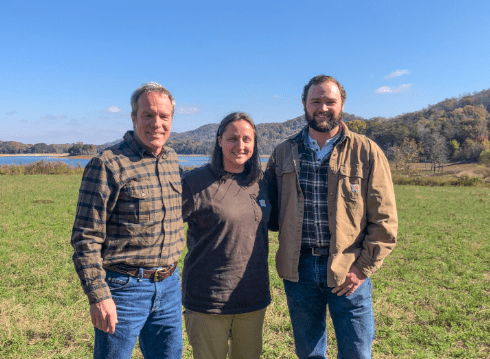The Girl Scout camp near Andersonville, Tenn., serves as a 461-acre outdoor classroom for UT students and organizations across the nation.
To most, Camp Tanasi represents a traditional camp experience filled with cabins, tents, archery, canoeing and s’mores, where girls come to make a new friend, face their fears and build memories of a lifetime. The camp serves over 300 girls every summer and nearly 4,500 throughout the year for troop camping. But what many don’t know is what goes on behind the scenes on the nearly 500-acre property. For nearly 20 years, Camp Tanasi has served as an outdoor classroom for graduate students at the University of Tennessee and wildlife/forestry organizations across the state and nation.
Craig Harper, professor and extension wildlife specialist for the university, has led the partnership between UT and the Girl Scout Council of the Southern Appalachians since the beginning in October 2000. What started out as solutions for a deer problem led to a symbiotic relationship between the two organizations.
Harper, who works in 20-25 states a year and speaks to several wildlife organizations, says Tanasi is the perfect outdoor classroom and demonstration area. Given that it is only a half-hour drive from the university, the property “provides opportunity to try new things, learn from our mistakes, teach the next generation of wildlife managers, and make a difference.”
Camp Tanasi benefits by having a team of energetic land managers provide stewardship of its forests and fields.
Passionate about educating on the often-unknown benefits of forest management, prescribed fire, selective herbicide applications and population management, Harper has taught more than 20 graduate students and well over 500 natural resource professionals, undergraduates, and 4-H’ers how the latest science in wildlife and vegetation management has led to increased plant and wildlife diversity at Camp Tanasi. Girl Scouts now have the opportunity to walk the trails and enjoy nature occurring in a variety of vegetation types.

Scenes show biodiversity at Camp Tanasi
The biggest changes Harper has seen, besides improving the nutritional condition of the deer, is better forest structure, additional vegetation types and additional wildlife species. With controlled burns and selective herbicide applications, Harper and his students have been able to diversify the vegetation types that occur on the property and reduce the numerous nonnative invasive plants that once were nearly overtaking both forests and fields. As a result, native plants not seen 20 years ago now are widespread, and wildlife are abundant for viewing.
Because of Craig Harper and his ongoing family of graduate students over the past 19 years, both Girl Scouts and UT have benefitted, and Girl Scouts can now see and enjoy a diversity of wildlife and plant species!
Brooke Conner is social media and content coordinator for Girl Scouts of the Southern Appalachians.

